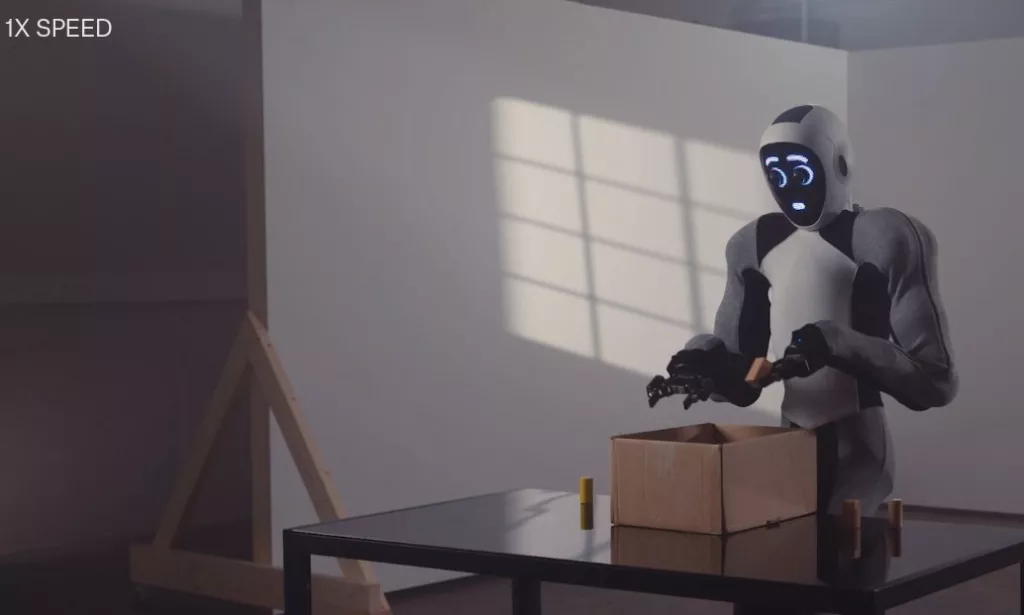Tesla’s Optimus, Sanctuary AI’s Phoenix, and 1X’s EVE are the first ones. But seeing the insane investments being made in AI robotics, the future is going to be very different for the labor market.
Well, finally.
Sanctuary AI unveiled its AI-powered humanoid robot called Phoenix. It’s a general-purpose robot with human-like intelligence. Touted as the world’s first in the intelligence department, it weighs a respectable 70 kg and is 5’7” tall.
It has human-like hands which can lift objects up to 25 kg heavy. The uses? Well, Phoenix can do tasks including merchandise packing, tagging, and even cleaning in retail stores, as demonstrated by the company.
It’s powered by an AI control system that the company is calling “Carbon.” Carbon is the software enabling Phoenix to think and act like human beings. As expected, there’s support for natural language processing and reasoning.
On the other hand, we have Tesla’s new robot dubbed Optimus. Videos have surfaced showing Optimus being able to walk properly and identify objects based on data from human movements.
OpenAI had also backed robotics startup 1X that I covered recently. Their robot called EVE is currently employed (if it’s the right word) at an Android manufacturing site. Not the phones.
EVE can also perform tasks such as opening windows and fetching objects among other things.


AI-powered humanoids like Phoenix, EVE, and Optimus stand to disrupt the labor market in a big way. There are concerns that there will be a shortage of jobs for humans once these robots are commercialized and mass-produced in an assembly line, taking over rote work and repetitive tasks that don’t require much thinking but only basic comparison, analysis, and identification capabilities of a 10-year-old.
Companies are working on commercially viable humanoids openly. Bipedal humanoid robots seem to be the next big thing.
The UK government has pledged £17.3 million (~$21.5 million) to fund new robotics and AI (RAI) technologies in universities. The startup Figure, which is also working on AI robots, raised $70 million to build its robots too. To put things in perspective, the global silicon wafer market size is expected to reach $27 billion by 2023. These are chips that power your phones and computers and are indeed more pervasive than AI robots.
The day when an army of AI robots is employed at factories and manufacturing plants is still far. And it cannot wipe out humans entirely. But a future that looks close to a human supervisor for 50 humanoids is not a pretty future to imagine for many.

